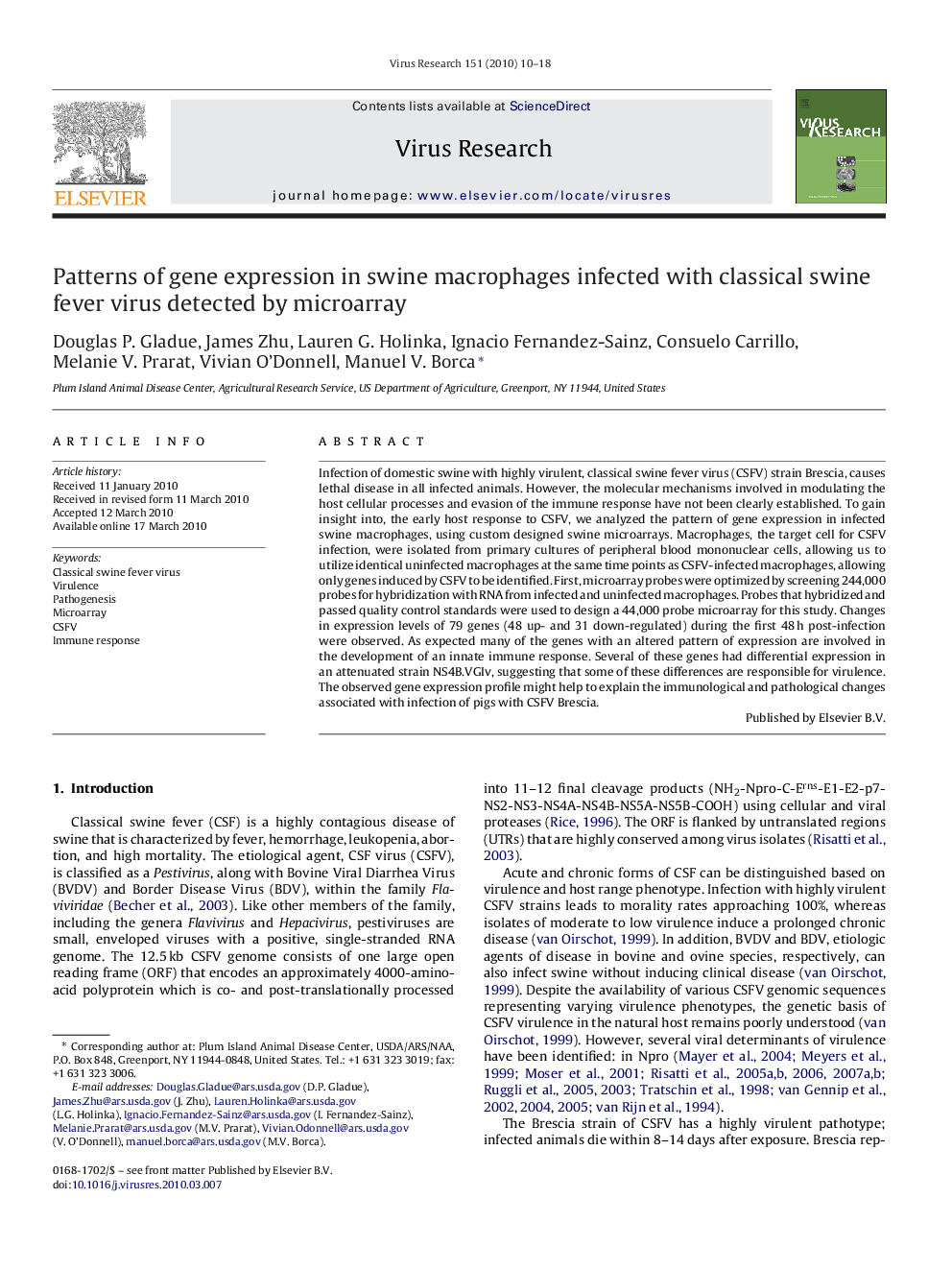| Article ID | Journal | Published Year | Pages | File Type |
|---|---|---|---|---|
| 3429401 | Virus Research | 2010 | 9 Pages |
Infection of domestic swine with highly virulent, classical swine fever virus (CSFV) strain Brescia, causes lethal disease in all infected animals. However, the molecular mechanisms involved in modulating the host cellular processes and evasion of the immune response have not been clearly established. To gain insight into, the early host response to CSFV, we analyzed the pattern of gene expression in infected swine macrophages, using custom designed swine microarrays. Macrophages, the target cell for CSFV infection, were isolated from primary cultures of peripheral blood mononuclear cells, allowing us to utilize identical uninfected macrophages at the same time points as CSFV-infected macrophages, allowing only genes induced by CSFV to be identified. First, microarray probes were optimized by screening 244,000 probes for hybridization with RNA from infected and uninfected macrophages. Probes that hybridized and passed quality control standards were used to design a 44,000 probe microarray for this study. Changes in expression levels of 79 genes (48 up- and 31 down-regulated) during the first 48 h post-infection were observed. As expected many of the genes with an altered pattern of expression are involved in the development of an innate immune response. Several of these genes had differential expression in an attenuated strain NS4B.VGIv, suggesting that some of these differences are responsible for virulence. The observed gene expression profile might help to explain the immunological and pathological changes associated with infection of pigs with CSFV Brescia.
